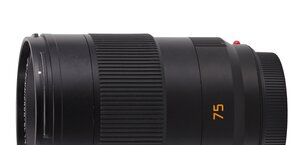Sigma 70-300 mm f/4-5.6 DG OS
3. Build quality and image stabilization
 |
Although the minimum focus is also 1.5 meters in the case of rival Canon, Nikon or Tamron models, we do regret that the Sigma decided to catch up with them. The Macro mode and the 0.95 meter minimum focus in the 70-300 mm APO model turned out to be a very good thing and giving them up in a more expensive instrument is a disputable decision to say the least. Anyway it would be a very serious argument for preferring the Sigma to its more solid competitors.
Please Support UsIf you enjoy our reviews and articles, and you want us to continue our work please, support our website by donating through PayPal. The funds are going to be used for paying our editorial team, renting servers, and equipping our testing studio; only that way we will be able to continue providing you interesting content for free. |
- - - - - - - - - - - - - - - - - - - - - - - - - - - - - - - - - - - - - - - - - - - - - - - -
At first glance the Sigma 70-300 mm OS looks quite solid too. Such an impression might disappear partially, though, when we take it into our hand and shake lightly. We can hear noticeable rattle coming from inside. Such a thing was unheard-of in the 70-300 mm models without stabilization so we suspect the image stabilizing module is responsible for these noises. As long as it doesn’t influence the quality of images we can treat it as just an annoying trifle. Whether the influence truly exists we’ll find out in the next chapters.
 |
As it is usual for Sigma lenses the bayonet mount of the tested device is made entirely of metal. Right behind it on the left we see stabilization switches (ON/OFF) and focusing mode switches (AF/MF). Next there is a very wide (over 5 centimeters of height) and ribbed zoom ring. Its work is practically perfect – it is well-damped and moves smoothly in the whole range allowing to set the needed parameters with precision. On zooming from 70 to 300 mm we see the lens extending significantly - from 127 mm (mount included) to 183 mm. The front element is extended on a quite strong inner tube without any lateral “play” tendencies.
 |
Immediately after the zoom ring we find the lens’s name, its parameters and... a depth-of-field scale with f/22 and f/11 markings. The question is what it really indicates because in the case of a zoom lens the depth of field depends strongly on the focal length value.
Further on, we encounter a manual focus ring. It is quite large, ribbed and it works decently well. On the ring there is a distance scale in feet and meters. Running through the whole scale requires a 90-degree turn. Unfortunately that turn makes the front element rotate too so there might be problems with using polarizing or split-field filters which, in the case of the tested Sigma, should be 62 mm in diameter.
When it comes to the inner construction we deal here with 16 elements in 11 groups. In the front element system there is one element made of low-dispersion glass (SLD) which is supposed to eliminate chromatic aberration efficiently at all focal lengths. Inside, we’ll also find a circular aperture with nine diaphragm blades which can be stopped down to f/22-36, depending on the focal length used.
The buyer gets two caps and a hood included. Comparing it to the 70-300 mm DG APO Macro model we also see a step backward here – we used to get also a stylish case and the older model was almost two times cheaper than the new one after all.
 |
Stabilization
Sigma boasts optical stabilization which efficiency is supposed to reach 4 EV. In order to check this claim we made several dozen of photos with the stabilization on and off, using 300 mm focal length and every exposure time ranging from 1/400 to 1/10 second. Then we assessed the percentage of blurred photos and found a connection between it and the exposition time expressed in EV (zero point being the equivalent of 1/320 sec time). The effect of such an operation is presented on the graph below.

As you see 4 EV is out of question. The highest efficiency noted by us, understood as the maximum distance between two curves mapped out in the experiment, amounts to about 2.5-2.7 EV. Taking into account the fact that the first Sigmas with the OS mechanism had results at the level of 2 EV we deal here with a slight but noticeable improvement. Still it’s a long way to the 3-4 EV level, achieved by the best stabilized Canon and Nikon lenses.






